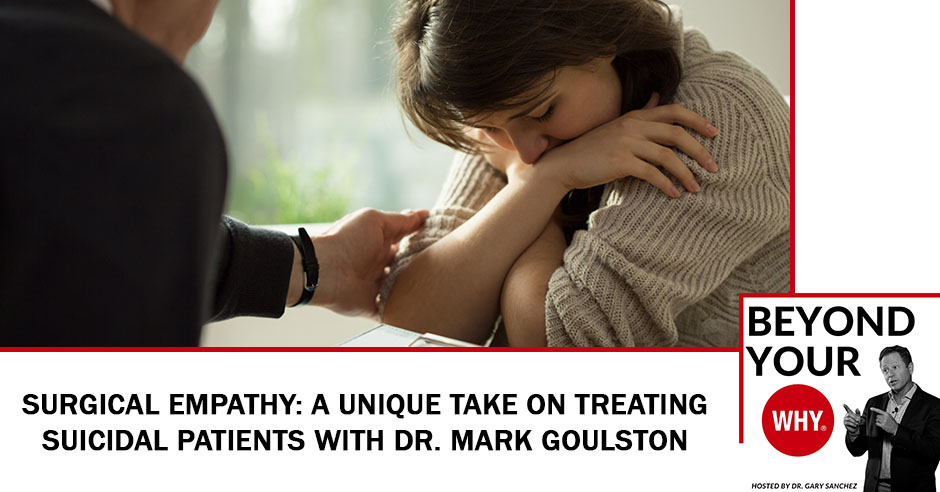
—
Dr. Mark Goulston has gone out of the box regarding treatment for his suicidal patients, and so far, it’s worked. His WHY of Challenge has propelled him to think differently when handling different cases and to challenge treatments that just don’t work. This is what drove him to develop a new approach: Surgical Empathy. Mark is a psychiatrist, author, a Founding Member of Newsweek Expert Forum, and a Marshall Goldsmith MG100 Coach. Unravel his viewpoint and understand the method to his approach as he sits down with host Dr. Gary Sanchez. Mark shares enlightening anecdotes and meaningful advice that may be just what you need. Learn how to ask the right questions and look beyond the obvious to truly understand not only others but also yourself.
—
Watch the episode here:
Listen to the podcast here:
Surgical Empathy: A Unique Take On Treating Suicidal Patients With Dr. Mark Goulston
We go beyond talking about your why, helping you discover and then live your why. If you’re a regular reader, you know that every episode, we talk about one of the nine whys and then we bring on somebody with that why so we can see how their why has played out in their life. In this episode, we’re going to be talking about the why of challenge, to challenge the status quo and think differently. If this is your why, you don’t believe in following the rules or drawing inside the lines. You want things to be fun, exciting and different. You rebel against the classic way of doing things. You typically have eccentric friends and eclectic tastes because after all, why would you want to be normal? You love to be different, think different and aren’t afraid to challenge virtually anyone or anything that is too conventional or typical for your tastes. Pushing the envelope comes natural to you. When you say you want to change the world, you mean it.
I’ve got a great guest for you. His name is Mark Goulston, MD. He is a founding member of Newsweek Expert Forum and a Marshall Goldsmith, MG100 Coach who works with founders, entrepreneurs and CEOs in dealing with and overcoming any psychological or interpersonal obstacle to realizing their full potential. He is the co-author, along with Diana Hendel, of Why Cope When You Can Heal?: How Healthcare Heroes of COVID-19 Can Recover from PTSD and Trauma to Triumph: A Roadmap for Leading Through Disruption (and Thriving on the Other Side). He’s the co-author of seven additional books with his book, Just Listen, becoming the top book on listening in the world.
He is the host of the My Wakeup Call podcast and is the co-creator and moderator of a multi-honor documentary, Stay Alive, an intimate conversation about suicide prevention. He is on the Board of Advisors to HealthCorps and BiasSync, an advisor to No Worry No Tension, a leading company in India focused on emotional wellness and the co-creator of the Goulston Vohra Happiness Scale. He was a UCLA professor in psychiatry for many years with a subspecialty focus on suicide prevention and helping the surviving family members following a completed suicide. He’s also a former FBI Hostage Negotiation Trainer. Mark, welcome to the show.
I got to send out a shorter bio. That’s a lot to live up to.
That means that you’ve been here for a while.
It’s interesting because as I was listening to you, your analysis was exactly correct about me having this challenging persona. If you’re reading, I challenge what’s out there not because I’m trying to be a rebel without a cause. I can’t not do it. In fact, what is obvious to the rest of the world, I often don’t see because the elephant in the room screams out to me loudly that I can’t see what other people see. Because I see the elephant in the room and it starts talking to me, I can often bring that out. People say, “How did you know that?” I said, “It’s the only thing that I saw.”
I’ll share something with you. This is how crazy it is. I was a psychiatrist for many years and none of my suicidal patients died by suicide. I remember I was seeing someone for about five months in my office. I don’t think it was racist but he said, “Mark, I’m black.” I said, “What?” He said, “I’m black.” He was very black. I said, “I didn’t know that.” I was focused on the pain that was going on inside, fear and the anger screamed out at me, “I’m running out of time. Find me.”
What’s interesting about the why of challenge that we always talk about is people with that why do see things differently than the rest of us. Their reticular activating system is programmed differently and they see things that the rest of us don’t see. That’s fascinating. That’s the first thing that you brought up because you’re seeing that thing that the rest of us didn’t notice.
I’m getting to know Gary and I hope I get to know him even more because I took his quiz. If you’re reading, take it. It’s going to tell you stuff about yourself. This is not a paid advertisement. It was remarkable. I can understand people saying, “Why do I have to care about my why? I’ve got all kinds of other things going on.” You’ll have to listen to the My Wakeup Call episode with Gary because he talks about how he reached a point where things weren’t going that well and then he had to pivot. What he landed in is he wasn’t paying attention to his why. It caused him pain and be a bit of lost.
[bctt tweet=”Death is compassionate to hopelessness and pain that won’t go away.” username=”whyinstitute”]
What he’s sharing with the world, which is why he’s excited and enthusiastic, is he pivoted to something that was life-changing for him. If you live a highly transactional life and there’s nothing wrong with that, but you find that it’s not making some pain inside you go away. You thought it would deliver happiness and it delivered immediate gratification for 20 to 30 years, maybe if you’re lucky. It may be that you’re on the same path as Gary and it may be that you do well to discover your why.
Mark, I want everyone to get to know you. Let’s start back. Where are you from? Where did you grow up? Tell us a little bit about your childhood and give us a quick version of your life. Where did you start? How did you get into Psychology, UCLA and writing books? Take us through that path.
I grew up in a suburb outside of Boston, Massachusetts. I’m told I’ve lost a fair amount of my Bostonian accent, even though I hope this is going to be a piece of interview. I went to undergraduate school at UC Berkeley. I look good for my age. I was there during the late 1960s. I went to medical school in Boston and then trained in Psychiatry at UCLA. You listed a bunch of things and I was impressed by who you were describing, although it’s hard to believe that was me. One of the things I’ll share, and I don’t know what you’ll do with it, is one of my greatest personal accomplishments was I dropped out of medical school twice and finished.
Why did you do that?
I don’t know anybody who dropped out twice and finished. I had untreated depression. I dropped out because what was happening is I was passing everything but I couldn’t hold on to the information. The first time I dropped out, I worked in blue-collar jobs, which I still romanticize. Life was so much simpler. You get off at 5:00, go back to your apartment and have a beer. I worked in Boston and what I used to do is I would put up liquor displays and Heineken windmills at bars and liquor stores. I loved getting to know the bartenders and the people delivering liquor to those places.
I came back and then after six months, it happened again. I asked for another leave of absence because I wasn’t flunking. The dean of the school cared more about finance than students. I met with him and I don’t remember meeting with him that clearly but then I got a call from the dean of students who cares about students. You’re going to find out a little bit about my why in the suicide prevention work because he called me and had a deep, thick, Irish Boston accent. His name was William McNary. We used to call him Mac. He called me and he said, “This is Mac. You better get in here. You got a letter here from the dean and we need to read it together.”
I go in there and read the letter. It says, “From the dean of the whole school who cares about finances. I’ve met with Mr. Goulston and we talked about another career. I’m advising the promotions committee that he be asked to withdraw.” I said, “What does this mean?” Dean McNary said, “You’ve been kicked out.” Gary, it was like a gunshot wound to my stomach. I know what that feels like because I almost died from a perforated colon several years ago. I collapsed a little bit.
I came from a background where depression age, hardworking parents and you’re only worth what you do in the world. If you can’t do it, you’re not worth much. I didn’t think I was worth much. Imagine you come from that and you’ve been kicked out. A little bit of a safety net is ripped away from you. He says this to me, Gary, “Mark, you didn’t mess up because you’re passing but you are messed up. If you get unmessed up, this school would one day be glad they gave you a second chance.”
I started to cry because I didn’t know what compassion was. He looks, points his finger at me and says, “Mark, even if you don’t get unmessed up, don’t become a doctor or don’t do anything the rest of your life. I’d be proud to know you because you have a streak of goodness and kindness in you that the world needs and we don’t grade in medical school. You won’t know how much the world needs that until you’re 35 but you got to make it until you’re 35. You deserve to be on this planet. You’re going to let me help you.” If he had said, “If I can help you, give me a call,” I probably wouldn’t have called him and I probably wouldn’t be here.

The combination of not believing in yourself at all, your future cratering, having someone reach in and see a future for you that you don’t see then he went to bat against the entire medical school. He arranged an appeal. He was a PhD. He stood up against the rest of that promotions committee who were all MDs, heads of hospitals, because he saw something in me that I didn’t see. The combination of that. I took a year off and I went to a place called the Menninger Foundation, which was a very famous psychiatric foundation institute that was in Topeka, Kansas and now in Houston.
It was during the oil embargo in the early 1970s. I drove from Boston to Topeka. I grew up in the suburbs but I was able to connect with schizophrenic farm boys. I remember asking the psychiatrists at Topeka State Hospital, “Is this legitimate?” They said, “What?” I said, “Is this a legitimate specialty? It’s not like anything else.” They said, “No, it’s legitimate and you’ve got a knack.” Knowing that I could do that, I went back, finished med school and then went to UCLA, trained in Psychiatry. One of my earliest mentors was probably one of the top three pioneers in the study of suicide prevention. He kept referring me to these very suicidal people and I paid it forward. I did with each of them what the dean of students did for me. Thank you for giving me a long leash to tell, I hope, a story that wasn’t too boring.
Not at all. Mark, take us back even to high school. What were you like in high school?
I was pretty smart. I skipped a grade when I was young. I was probably intellectually or intelligence-wise, able to keep up with the people a year older than me but I was socially backward. It was weird because in high school and if you remember that you were an athlete, but in high school or even in little league I would play right field. That right field is the worst position on a baseball team. It’s for people who can’t do anything else but you have to include them in the gym. It wasn’t even high school because I didn’t make a high school baseball team but early on during the summers, I would go to this camp in which I was with people my age and I was in the infield. I was hitting home runs in that abbreviated field. That’s how I was socially also. I was socially very introverted and very shy.
One of the interesting things about the why of the challenge is the people with that why either do extremely well or do very poorly. If they look at their why as a gift, like you are now, you do amazing things. When they’re younger, oftentimes, they see themselves as an outcast, as different, doesn’t fit in. “I’m not like everybody else,” and they go the other direction and oftentimes end up medicating to get away from themselves. That’s why I wanted to go back and see, “What you were like in high school?” It sounds like maybe you weren’t typical, nor in college, nor in med school. You didn’t take the typical path and didn’t follow the traditional route but you got to a place that’s been amazing for so many people that you’ve been able to touch.
I don’t know if you know this statistic but someone told me because I do suicide prevention programs with a friend of mine whose fourteen-year-old son died by suicide. He reached out to me and we present to YPO and EO. He made a documentary called Tell My Story, because that was one of the suicide notes from his son. He shared something with me. He said, “About a quarter of entrepreneurs became entrepreneurs to deal with their depression of being different when they were younger.” Many of them aren’t that bothered by failure because they were depressed because they didn’t fit in. Richard Branson or Herb Kelleher had dyslexia, ADD. What happened is, they became entrepreneurs because they couldn’t work in other settings where they had to follow all the rules.
It’s unfortunate that you went to UCLA because I went to USC. Those of you that are reading may or may not know that USC and UCLA are fierce adversaries. No matter who it is that goes to UCLA, I have to tell them it’s unfortunate that they went there. When you got out then, did you get into private practice right away or what happened after you finished medical school?
What was interesting is one of my mentors was a suicide prevention specialist. One of the top ones in the world. Something that was very fortunate for me was when I finished training, I was supposed to go into a fellowship but the fellowship fell through 1 or 2 weeks before I graduated. I just went into practice with this mentor of mine, Dr. Ed Shneidman would refer me to suicidal patients. Here was my good fortune. If I’d gone into an institution, when I saw patients, I would have had to make sure that I followed all the guidelines. What happened is, as I was seeing suicidal patients, I learned to listen into their eyes and their eyes were screaming out to me, “You’re checking boxes and I’m running out of time.” I had a choice, check the boxes or go where their eyes took me. I wasn’t a rogue psychiatrist. I still follow certain standards but I didn’t have to report what I was doing and I followed with their eyes took me.
[bctt tweet=”If you focus on what they’re listening for and you get it right, they’ll give you everything.” username=”whyinstitute”]
I remember this dentist who was highly paranoid came in. He sees me and says, “You’re the seventh psychiatrist I’ve seen in a couple of years.” I said, “Sounds like you’ve been busy.” He says, “I’m looking for one that I think will work with me but before we go any further, I need to tell you something. The people above my bedroom make noise all night long. They won’t shut up. It’s driving me crazy.” I was about to say something empathic like, “That sounds frustrating,” and he says, “Before you answer me, you need to know that I live on the top floor of my building and there is no access to the roof above me.” He then gave me a Chris Rock. I’m like, “What are you going to do that one?”
“I’m playing in my head.” He said this is the 6th or 7th psychiatrist and they probably say, “I can understand how that must be frustrating. That may be part of the things that we can help with. Maybe we can treat it in such a way.” He looked at me. I’m playing all the normal and kindly responses. In my mind, I said, “Do I want to help him or do I want to just give him another reality check and have him go look at another psychiatrist?” He’s looking at me with that look. We’ll call him John. I said, “John.” He said, “Yeah?” I looked right into his eyes and I said, “I believe you.” He looked at me and his eyes filled with tears and started sobbing, almost convulsing. I thought, “I’ve just released someone. I’ve pushed them over the edge,” but I know this territory pretty well and I knew it would be like a tropical storm. I just let him cry for about five minutes. He stops. His eyes are all bloodshot and then he looks at me with a huge smile and says, “It does sound crazy,” and we connected.
Is that a common thing for people that are struggling with suicidal tendencies is they need to be heard? Is there a common or not a common theme? I’ve never experienced somebody in that situation. I don’t know what I would do if I ran into somebody that was struggling.
The week after Kate Spade and Anthony Bourdain, they died by suicide around the same time. I wrote a blog, which you can find if you look and it’s called Why People Kill Themselves: It’s Not Depression. It got 500,000 views in ten days. It’s on Medium. I said, “There are hundreds of millions of people, maybe one billion or more, who are depressed in the world and the majority of them don’t commit suicide. There are people who lose marriages or jobs and the majority of them don’t die by suicide. One of the things that nearly all the suicidal patients I saw had in common is they had despair.” If you break the word despair into des-pair, they feel unpaired with reasons to live, hopeless without a future, helpless, powerless, worthless, useless, purposeless, meaningless and when they all line up together like a slot machine, pointless. They pair with death to take the pain away.
Two of my books that you mentioned, Why Cope When You Can Heal? and then the second book was Trauma to Triumph. In Why Cope When You Can Heal? I introduced the approach that I’ve finally given a name to that I used for years. It’s called Surgical Empathy. Something I didn’t go into but I am now when I give talks on it, is you know the term dialysis and the term lysis, it breaks things. The way surgical empathy works is through a process of empatholysis which means that you break the destructive connections that people are connected to that are holding them back.
One of the things that people who are highly suicidal feel that you wouldn’t feel if you haven’t been there is, death is compassionate to hopelessness and pain that won’t go away. Death is like the sirens calling out to the sailors, “We’ll take away your pain.” That’s what death does to people who feel highly suicidal. They feel not just understood but felt, “Death will take it away.” In my book Just Listen, which did so well around the world, is I talked about how do you cause people to feel felt? Feeling felt is not the same as feeling understood.
It is you don’t feel alone in the hell you’re going through. I learned how to interact with my patients who are feeling suicidal and they felt less alone in hell. I didn’t push treatments on them. What I basically said is, “I’m going to find you wherever you are. I get there, I’m going to keep your company,” and then if you want some treatments because all the ones you’ve tried haven’t really worked. They’ll say, “Maybe we should try something.” Job one is I want to find you in the dark night of your soul and keep you company.
When you talk about how to help people feel felt, dive a little deeper into that for us.
I’m going to give a tip to anyone worried about their teenagers or spouse. There’re some videos of me doing this. I’m a Marshall Goldsmith’s MG100 Coach and I share these four prompts. It’s up on YouTube. If you’re worried about a teenager, child or spouse, but let’s focus on teenagers because the suicide rates are going up. It’s alarming. My advice to parents is, don’t have a heart-to-heart talk with a teenager unless they initiate it. Do this when you’re doing something together like driving, doing an errand and say, “All of us parents are worried about our kids. Can I ask you a few things?” “Okay, mom.” “Okay, dad.” Here are the four prompts. The first one is, “At your absolute worst, how awful are you capable of feeling about yourself or your life?” They’re going to go, “What?” “How much pain are you capable of feeling about your life or yourself when it’s at its worse?” Your teenager is going to say, “Pretty awful.” Using surgical empathy, you say, “Pretty awful or very awful?” “Very awful.”
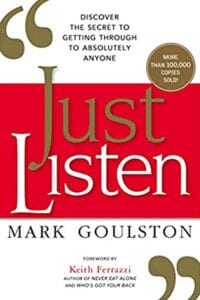
The second prompt, “When you’re feeling that, how alone are you capable of feeling with it?” They say, “Pretty alone.” You want to go deeper. “Pretty alone or all alone?” “All alone.” The third thing you say to them is, “Take me to the last time you felt it.” They’re going to say, “What?” “Was it 2:30 AM because we heard you walking around in your bedroom the other night.” A special thing happens when you get someone to describe something so clearly that you can see it with your eyes as the listener, they re-experience the feeling. As your kid describes that, “I was walking around, I couldn’t get back to sleep. I didn’t know whether to put my fist through the wall or my head through the wall.”
“What happened?” “I started looking for your outdated sleeping pills. I couldn’t find them.” “What happened?” “I didn’t know what I was going to do.” “What happened?” “The sun rose. I felt a little better.” The fourth thing you say to them is, “I need your help with something. Your mom, your dad, needs your help. Also, when you’re feeling that way or even heading down that way, I want you to do whatever it takes to get our undivided attention because we get preoccupied, we get distracted. There is nothing more important than helping you to feel less alone when you feel that awful. Do you understand me?”
If you follow those steps of tactics, you may need to modify it, but that can help. I’m expanding my work now from suicide prevention to what would two stubborn children who grow up to be angry teenagers, defiant teenagers or failure to launch twenty-somethings who are being passed by their younger siblings. I’m partnering with a great partner and we’re launching this. We’re having families do this. Every day we’re asking families, “When you’re with your children, and it works when they’re about 6, 7, or older. You say, ‘We’re going to have an exercise every day and we’re going to talk about four things.’” The parents go first, “What is something that you felt upset about?” That’s the first thing. The second thing is, “What did it make you want to do?” That was your impulse. “What did you do?” The fourth thing is, “How did that work out?” What you’re teaching your children and modeling is self-restraint. A lot of times children don’t listen to their parents. They imitate their behavior and don’t see self-restraint. They see mom and dad snapping at each other. The children model the behavior. They often don’t listen to lessons.
By doing this, what the parents are modeling is, “Whenever we feel upset, we have an impulse to do something that’s probably not a good idea.” We recommend to the parents, don’t bring up something that’s going to freak out your kids. Don’t say, “Mom and dad lost their jobs and we’re going to be in the street tomorrow.” Try and pick something that’s not going to freak your kids out. What we’re hearing is how it’s helping marriages because what’s going on is, moms and dads, after they do the exercise, they go upstairs and one of them will say to the other, “What I usually do when I’m upset with you is I either yell or I mope but I didn’t do that. What I’m doing is I’m telling you what I felt upset about, and going forward, please don’t do that again.” By going through this exercise, what the whole family is modeling is self-restraint. I don’t want to get into politics but what we’re seeing right now and why I think this country’s in so much trouble is you’re seeing people not modeling much self-restraint. We’re seeing the negative consequences of that.
What are the negative consequences of not practicing self-restraint?
I hope your readers know that you’re an amazing athlete. You got to look up everything you can find out about this guy. Part of what you learn as an athlete is you need to be able to show self-restraint and turn your anger into focus and determination. What was interesting, because you weren’t at UCLA is John Wooden. One of the things he would say to his players is, “We’ll play to our strengths and we’re going to make the other team angry. We’re going to make them lose their cool because if they lose their cool, they’re going to lose. We’ll play to our strengths and be very centered.” You probably know the story where he taught his players to spend a lot of time lacing their sneakers to avoid blisters. He might have been the most admired college coach ever.
Those questions there is how you help people practice self-restraint so they don’t lose their cool and they stay with their strength. That’s been very helpful. Just hearing what you’ve got to say about working with somebody who’s going through those kinds of challenges. Most of us, especially parents, don’t have any idea what to do. We do what maybe we would have done but that’s not necessarily going to work. Those four questions were very helpful. Thank you for sharing that.
Thank you for giving me a platform.
I’m assuming you transition from doing suicide prevention into working with CEOs and executives. How did that happen?
I see the elephant in the room and I somehow make it safe for people to open up. What happens is, I’m not just a coach. I’m a confidant, an advisor to CEOs. A couple of them have said, “I can’t hide from you.” I said, “Is that good or bad?” One said, “It’s weird but it’s not bad.” Another one said, “I hide from everyone, including myself.” If you go to my LinkedIn profile, I seem to be able to be helpful to founders, entrepreneurs and CEOs about any psychological or interpersonal challenge that they’re having.
[bctt tweet=”Forgiveness is accepting the apology you will never receive.” username=”whyinstitute”]
How are you able to see the elephant in the room? Tell us about that. What do you mean by that? What does that look like or feel like for you? You’re seeing something we don’t see. How do you do it?
This is how I learned to listen into minds, eyes and souls. The first one, I was on rounds at a VA Hospital in Boston. This is just before I was going to drop out. I was probably quite depressed. We were outside. I’ll call him Mr. Smith’s room. All the other medical students, interns, residents and the attending physicians, were all jockeying, “Mr. Smith needs chemo.” “Mr. Smith needs surgery, such and such.” I’m like a ping pong ball not knowing what he needs. A nurse comes over to us. We’re outside Mr. Smith’s room and she said, “Didn’t you hear Mr. Smith jump from the roof last night? He’s in the morgue.” As loud as your voice is right now, I heard a voice say to me, “Maybe he needed something else.” That’s listening into minds.
My second thing was listening in the eyes. This is how I learned how to listen to eyes. I was paged to see an AIDS patient in the early 1980s. I don’t even think it was given a diagnosis yet. I was paged by the doctors up in one of the medical floors. They said, “We need you to okay these restraints on his arms, legs and an order for an anti-psychotic medication because he’s pulling at the IVs and his respirator. He’s kicking and screaming.” I go in the room and we’ll call him Mr. Jones. He looked at me and his eyes were like saucers. He couldn’t talk because he had a respirator tube in his throat. I say, “What is it?” They said, “He’s just psychotic.” I gave him a pencil to write something in his right hand. He just scribbled and I thought, “Maybe they’re right.” I said, “You were pulling at your IVs, kicking, riving off the bed and pulling off the respirator tube. We had to put down your arms and legs. I gave you something to calm you down. When you calm down, we’ll take everything off.”
A day later, I get paged and they say, “Mr. Jones told us to page you.” I go into his room and he’s seated up in bed. He’s off the respirator and the restraints. He looks into my eyes and they weren’t saucer-shaped but he grabbed my eyes with his eyes. He said, “Pull up a chair.” He wouldn’t let go of my eyes and he said, “What I was trying to tell you is that a piece of the respirator tube was broken and stuck in my throat and you do know that I will kill myself before I go through that again, do you understand me?” He wouldn’t let go of my eyes and I said, “I’m sorry. I get it.”
The third case, which was when I was out practicing as a psychiatrist seeing suicidal patients, I used to moonlight at one of the state hospitals. Once a month, I cover for the doctors on the weekend. Sometimes you’d be up 24 hours and you’d be sleep-deprived. I was seeing a patient that was referred to me by Dr. Shneidman. I called her Nancy. That’s not her real name. I didn’t think I was helping her. She’d made 2 or 3 suicide attempts before I started seeing her. She’d been in the hospital several times a year. Back then, you could be in the hospital for a month. Now they get you in. They get you out. I didn’t think I was helping her at all and she didn’t make much eye contact. This is where I learned how to listen into people’s souls. It’s Monday. I hadn’t slept much. I’m in the room. There’s Nancy. She’s not looking at me. She’s looking 30 degrees to the right.
As I’m sitting with her, the color in the room turns black and white, then I get the chills. I thought I was having a seizure or a stroke. I did a neurologic exam on myself. I’m tapping on my knees and elbows. I said to myself, “I’m all here. I’m not having a stroke or seizure.” I had this crazy idea that I was looking out of the world and feeling what she felt and because I was sleep-deprived, I blurted something out that normally I wouldn’t say. I said, “Nancy, I didn’t know it was so bad. I can’t help you kill yourself, but if you do, I will still think well of you. I’ll miss you. Maybe I’ll understand why you had to get out of the pain.”
I thought, “Did I think that or did I say that? I gave her permission to kill herself. I’m screwed.” She looked at me for the first time. She looked and held on to my eyes. I thought she was going to say, “Thank you for understanding. I’m overdue.” I said, “What are you thinking?” She said, “If you can really understand why I might have to kill myself to get out of the pain, maybe I won’t need to,” and then she smiled. That’s when I started going into their world because I didn’t want to let go of her eyes.
This is the first time we made eye contact like that. I said, “I’ll tell you what we’re going to do, I’m not going to give you any treatments that you’ve been tried on before that haven’t worked, and have you come back and tell me that you didn’t try them because they didn’t work. Would that be okay?” She looked at me like, “I’m listening. Keep talking.” I leaned in and I said, “What I am going to do is I’m going to find you wherever you are because you’ve been there all alone too long. I don’t want you to be alone anymore. Is that okay?”
Her eyes watered up and said, “I think I’d like that.” Does that give you an example of my journey? The point is, people will say, “He’s not a challenger. He’s, ‘I saw outside the box.’” I’m trying to teach the world that. The book behind me Just Listen, became the top book in listening in the world. I don’t teach it in America because America is one of the worst countries when it comes to listening. Americans want to be listened to. I’ve spoken in Moscow twice. India three times. The UK, Canada.

Here’s another tip I would like everybody to take from our episode, including you, Gary. I gave a talk in Moscow along with a Nobel Prize winner named Daniel Kahneman. He wrote the book Thinking, Fast and Slow. Five of my nine books are bestsellers in Russia. The title of my talk was Change Everything You Know About Communication. There’re little video clips of me up on YouTube. The whole point of it is what I said to this audience of 1,000 Russian businessmen, CEOs and managers, I said, “I’m going to change everything you know about communication because the way you communicate now is people listen to you when you give them information and then you listen to them. It’s a very nice transactional conversation. If you’re lucky, you might get some business from them, but if instead of focusing on people listening to you and being transactional, you focus on what they’re listening for. When you focus on what they’re listening to, as long as you have good stories, good points, they’ll give you their mind for one hour. If you focus on what they’re listening for and you get it right, they’ll give you everything.”
I said to them, “Let me see if I got it right.” I’m speaking in English, but in real-time it’s translated into Russian. I said, “If you’re business people, you’re listening for a way to get greater positive and measurable results because that’s how you get a raise. Is that true?” “Da.” “You’re listening for a way to get those that are less stressful because you’re all drinking too much or eating too much. People, it’s a real mess. You’re listening for a way to get those positive results that are less stressful, is that true too?” “Da,” and then I said, “Most of all, what you’re listening for, is for me to give you tactics that you can use immediately that are doable by you. You don’t have to be a psychologist. You don’t have to buy a book because I haven’t written this book yet. You don’t have to take a course, because I haven’t created a course yet. You’re listening for tactics that you can use immediately, right out of the box and you don’t have to buy a book, which you don’t have the time to read or take a course that you don’t have the time to take, that gets you better results that are less stressful and that will be worth more than $500 and a day of your time that you spent to be here. Is that true?” They go, “Da.” I say, “Sit down. I got to give the presentation.”
If you’re reading, you need to go to the WHY Institute, because Gary is still that incredible athlete. He wants to share something with you that changed his life for the better. Changed how he’s going to spend the rest of his life. My counsel to you Gary is if you can share how that happened, you’ll get more buy-in, because if you try to convince people how it’s good for them, you might get some but what people are listening for is they’re saying, “I need to change my life too. Something’s not working right. All the stuff that I did that got me some positive results aren’t working. I don’t know what else to do but I got to do something else. I’m like a broken record. I’m living the definition of insanity. I keep doing the same old things expecting different results. It’s not happening for me. How did this change your life?” I’m just hoping you will share that as you shared that on my show. It’ll be a field of dreams for people who know what that’s about and people will come.
Focus on what they are listening for. That was a good example. What you say is if you’re able to playback to them what you think they’re listening for, then you know you’re right and then you can deliver on that.
What they’re listening for is they’re in pain because they’re stuck. All their usual approaches to getting unstuck aren’t working. They’re getting frustrated and not taking very good care of themselves because to cope with the frustration, they’re eating and drinking poorly. They need to make the discovery that you made. If you were to share how that changed your life like you said, you’ve never been suicidal but it saved your life from where you were stuck, that’s your audience.
When I was on your show, I didn’t elaborate enough on that aspect of it. More of the convincing versus the compelling. That’s super helpful. I appreciate you bringing that up. Mark, what is the best piece of advice that you’ve ever given or ever gotten?
I’ve received a lot of advice. I’m giving you a piece of advice because one will change all your relationships and cause you to be happier than you’ve ever been in your life. I’ll start with that one. It’s a quote from a friend of mine, Dr. Shawne Duperon. She said, “Forgiveness is accepting the apology you will never receive.” After I heard that, I tried that with my dad, who’s been dead since 1995. The apology that I never received from him was one of the things that he used to say because he was a numbers person, an accountant, when I would come up with creative, challenging ideas, that made him a little crazy. Like a CEO who is a sales type person. When I come up with one of my crazy ideas, he’d say, “What makes you think you know anything about anything?” Because I made him nervous.
The apology that I never received was him saying to me, “Mark, I can’t even imagine what you’ve accomplished in your life. When I used to say to you, ‘What makes you think you know anything about anything,’ I was talking about myself. I knew numbers but there’s a lot about life I didn’t know. The stuff you know about life, I am proud that you’re my son,” and then I apologize to him. I said, “I am sorry that I had a chip on my shoulder and I miss you.”
Mark, if there are people that are reading that are wanting to connect with you. They want to hear more from you. Maybe they want you to come to speak at their event or come work with them. What’s the best way for them to get in touch with you?
[bctt tweet=”Everybody has wake-up calls, but not everybody wakes up.” username=”whyinstitute”]
Find me on LinkedIn because that’s probably the best place where it’s most current in terms of what my focus is. My website is also pretty robust, MarkGoulston.com. I hope they’ll visit my podcast so they can hear you when you were my guest on My Wakeup Call. Check that out and you’ll hear Gary being a wonderful and even compelling guest.
II love the name of your show and what it stands for. Tell people a little bit about what Wakeup Call stands for.
Everybody has wake-up calls but not everybody wakes up. A wake-up call is something that’s your opportunity to shift in your life. Focus on something that maybe you weren’t focusing on. I start all my podcasts the same. I say, “What’s most important to you in life currently that you think will be most important to you at the end of your life beyond family, friends, etc.?” People share what that is and then I say, “Share the wake-up calls that led you there.” People share stories as you did on my podcast. “This was a left turn. This was a right turn. This was a U-turn.” People share those. The way I use my podcast is I introduce my guests to each other. I get to know people. I say, “Why don’t you listen to each other’s podcasts and if you like what you hear, I’ll introduce you?” I’ve had people like Larry King on, Ken Blanchard, Jordan Peterson, Esther Wojcicki, whose daughters are the CEO of Netflix and 23andMe. Also, Tom Steyer ran for president. All kinds of people.
Mark, thank you so much for taking some time of your day to be here. It’s been a joy learning from you. I’ve got three pages of notes from our conversation. I appreciate that and I look forward to staying in touch as we continue on our journeys.
I got the beginning of clarifying my why with Gary’s help and the WHY Institute. If you’re reading, you need to do the same. Even if you don’t think you need a why, be curious enough to find out some stuff about yourself. It’s only going to make your life better.
Thank you. Have a great day, Mark.
You too. Thank you, Gary.
—
It’s time for our new segment, Guess The Why. I want to talk about the celebrity or the singer, Justin Bieber. What do you guys think his why is? Is he somebody that thinks differently, follows the rules or stays the course and does things the way other people do? I believe that his why is to challenge the status quo and think differently. He’s somebody that went from a picture-perfect little kid to playing a completely different part as he’s gone along in his life. To getting lots of tattoos, always surprising people and doing something unique and different with his musical career, appearance, new songs, changing genre of music, where you can go from pop to hip hop, to lyrical, to Despacito.

He’s somebody that thinks outside the box and challenges the way things are done. He comes up with something new and different. He is somebody who thinks differently. That’s my take. I’d love to hear yours. Thank you so much for reading. If you’ve not yet discovered your why you can do at WhyInstitute.com. You can even use the code Podcast50 to do it at half price. If you love the show, please don’t forget to subscribe below and leave us a review and a rating on whatever platform you’re using. Have a great week. Thank you.
Important links:
- Newsweek Expert Forum
- MG100 Coach
- Why Cope When You Can Heal?: How Healthcare Heroes of COVID-19 Can Recover from PTSD
- Trauma to Triumph: A Roadmap for Leading Through Disruption (and Thriving on the Other Side)
- Just Listen
- My Wakeup Call – Apple Podcasts
- HealthCorps
- BiasSync
- No Worry No Tension
- Why People Kill Themselves: It’s Not Depression
- What to Say to Your Teenager Who You’re Worried About – YouTube
- LinkedIn – Dr. Mark Goulston
- Thinking, Fast and Slow
- MarkGoulston.com
- Larry King – Previous episode on My Wakeup Call with Dr. Mark Goulston on Apple Podcasts
- Ken Blanchard – Previous episode on My Wakeup Call with Dr. Mark Goulston on Libsyn
- Jordan Peterson – Previous episode on My Wakeup Call with Dr. Mark Goulston on Apple Podcasts
- Esther Wojcicki – Previous episode on My Wakeup Call with Dr. Mark Goulston on Libsyn
- Tom Steyer – Previous episode on My Wakeup Call with Dr. Mark Goulston on Libsyn
About Dr. Mark Goulston
 Mark Goulston, M.D. is a Founding Member Newsweek Expert Forum and Marshall Goldsmith MG100 Coach, who works with founders, entrepreneurs and CEOs in dealing with and overcoming any psychological or interpersonal obstacles to realizing their full potential. He is the co-author, along with Dr. Diana Hendel of Why Cope When You Can Heal? How Healthcare Heroes of Covid-19 Can Recover from PTSD and Trauma to Triumph: A Roadmap for Leading Through Disruption and Thriving on the Other Side as well as being the author or co-author of seven additional books with his book, “Just Listen,” becoming the top book on listening in the world.
Mark Goulston, M.D. is a Founding Member Newsweek Expert Forum and Marshall Goldsmith MG100 Coach, who works with founders, entrepreneurs and CEOs in dealing with and overcoming any psychological or interpersonal obstacles to realizing their full potential. He is the co-author, along with Dr. Diana Hendel of Why Cope When You Can Heal? How Healthcare Heroes of Covid-19 Can Recover from PTSD and Trauma to Triumph: A Roadmap for Leading Through Disruption and Thriving on the Other Side as well as being the author or co-author of seven additional books with his book, “Just Listen,” becoming the top book on listening in the world.
He is the host of the My Wakeup Call podcast and is the co-creator and moderator of the multi-honored documentary, Stay Alive: An Intimate Conversation about Suicide Prevention. He is on the Board of Advisors to Healthcorps and Biassync and is an advisor to No Worry, No Tension, the leading company in India focused on emotional wellness and the co-creator of their Goulston Vohra Happiness Scale. He was a UCLA professor of psychiatry for more than twenty years with a subspecialty focus on suicide prevention and helping the surviving family members following a completed suicide and is also a former FBI hostage negotiation trainer.

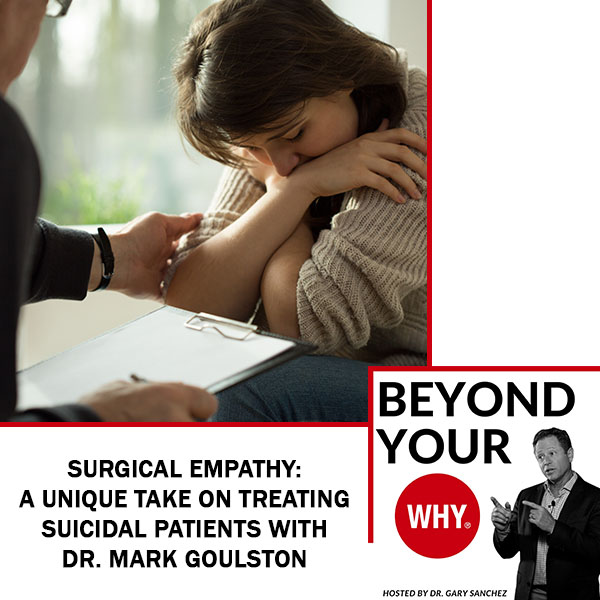

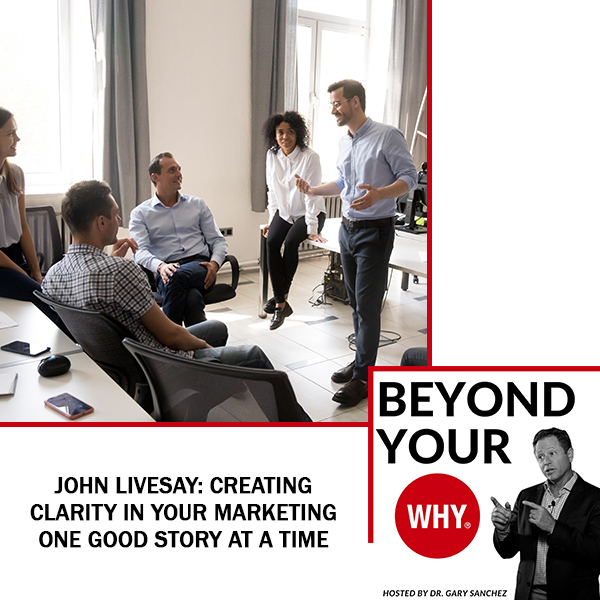
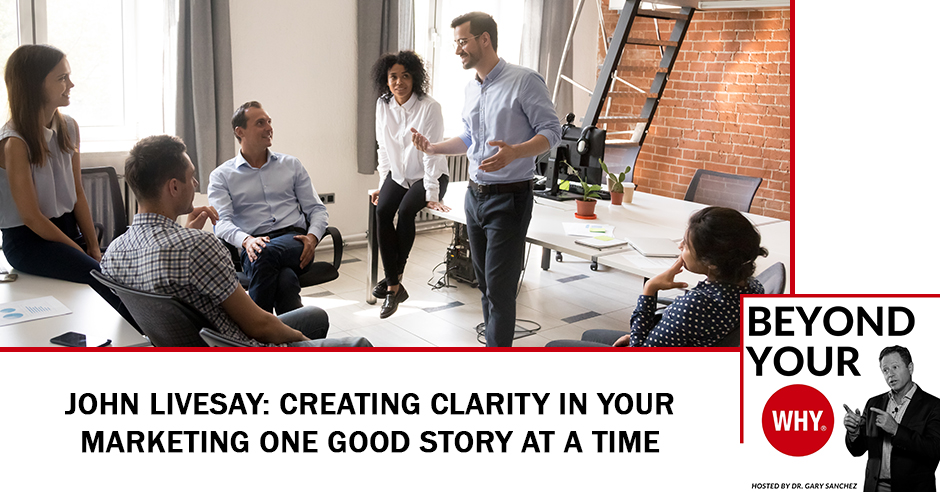
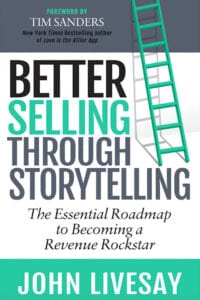


 John Livesay, aka The Pitch Whisperer, is a sales keynote speaker where he shows companies’ sales teams how to turn mundane case studies into compelling case stories so they win more new business. From John’s award-winning career at Conde Nast, he shares the lessons he learned that turns sales teams into revenue rock stars. His TEDx talk: Be The Lifeguard of your own life has over 1,000,000 views.
John Livesay, aka The Pitch Whisperer, is a sales keynote speaker where he shows companies’ sales teams how to turn mundane case studies into compelling case stories so they win more new business. From John’s award-winning career at Conde Nast, he shares the lessons he learned that turns sales teams into revenue rock stars. His TEDx talk: Be The Lifeguard of your own life has over 1,000,000 views.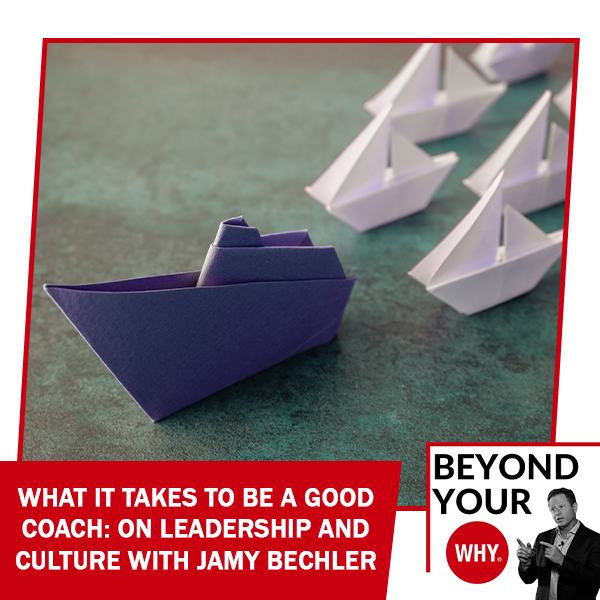
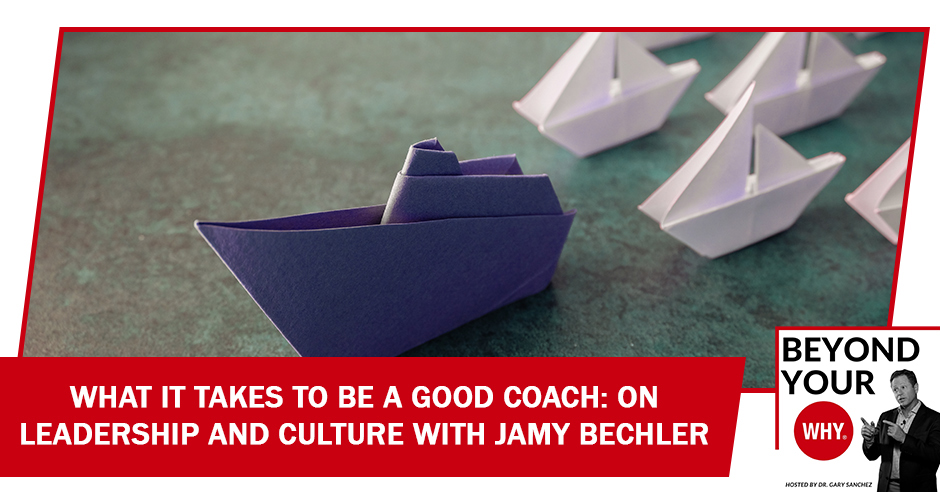
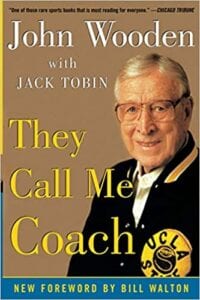


 Jamy Bechler is an author, motivational speaker, leadership consultant, and host of the popular “Success is a Choice” podcast. With a background as a championship athletic director, award-winning college basketball coach, and business consultant, he works with high-level sports teams and businesses helping them maximize results. He is recognized as an expert in leadership, culture, and teamwork.
Jamy Bechler is an author, motivational speaker, leadership consultant, and host of the popular “Success is a Choice” podcast. With a background as a championship athletic director, award-winning college basketball coach, and business consultant, he works with high-level sports teams and businesses helping them maximize results. He is recognized as an expert in leadership, culture, and teamwork.